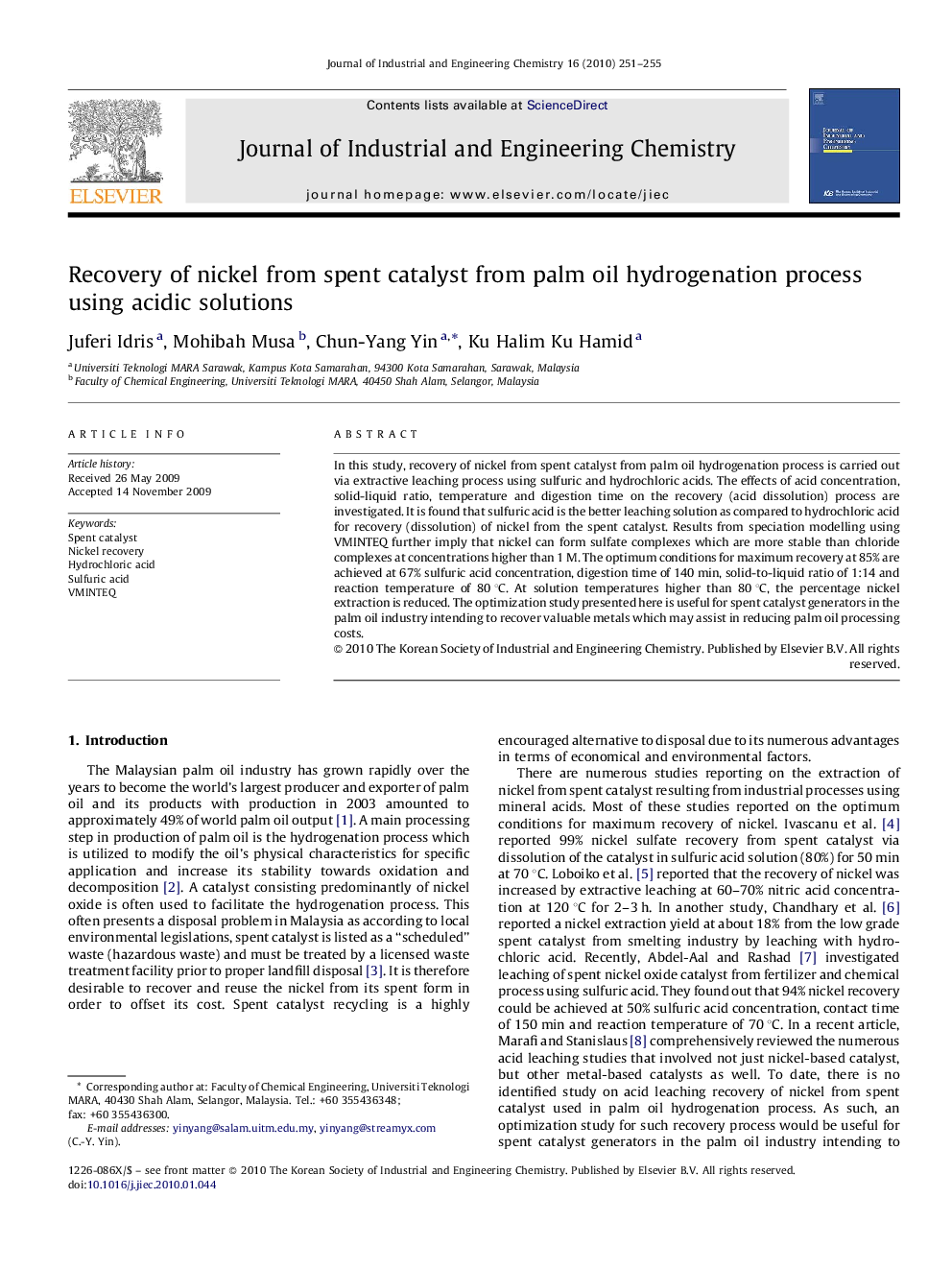| Article ID | Journal | Published Year | Pages | File Type |
|---|---|---|---|---|
| 228775 | Journal of Industrial and Engineering Chemistry | 2010 | 5 Pages |
In this study, recovery of nickel from spent catalyst from palm oil hydrogenation process is carried out via extractive leaching process using sulfuric and hydrochloric acids. The effects of acid concentration, solid-liquid ratio, temperature and digestion time on the recovery (acid dissolution) process are investigated. It is found that sulfuric acid is the better leaching solution as compared to hydrochloric acid for recovery (dissolution) of nickel from the spent catalyst. Results from speciation modelling using VMINTEQ further imply that nickel can form sulfate complexes which are more stable than chloride complexes at concentrations higher than 1 M. The optimum conditions for maximum recovery at 85% are achieved at 67% sulfuric acid concentration, digestion time of 140 min, solid-to-liquid ratio of 1:14 and reaction temperature of 80 °C. At solution temperatures higher than 80 °C, the percentage nickel extraction is reduced. The optimization study presented here is useful for spent catalyst generators in the palm oil industry intending to recover valuable metals which may assist in reducing palm oil processing costs.
